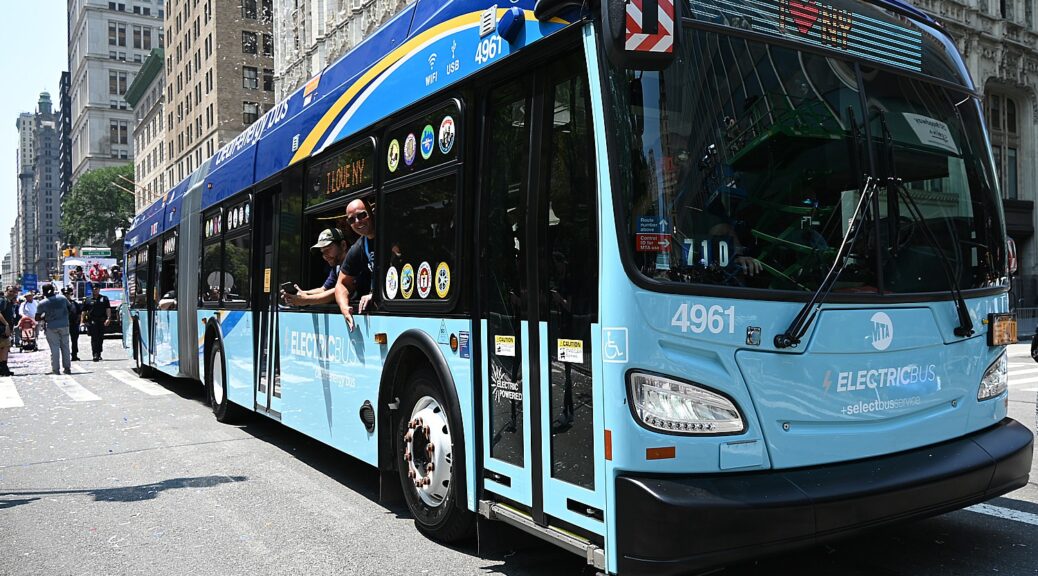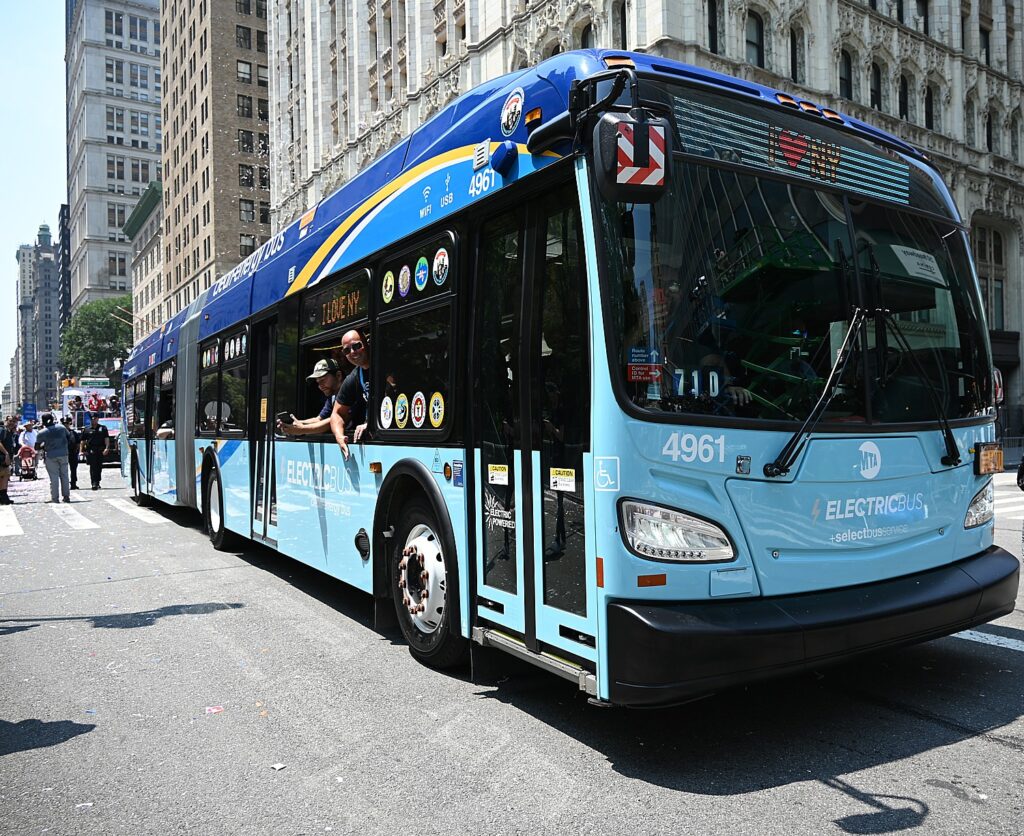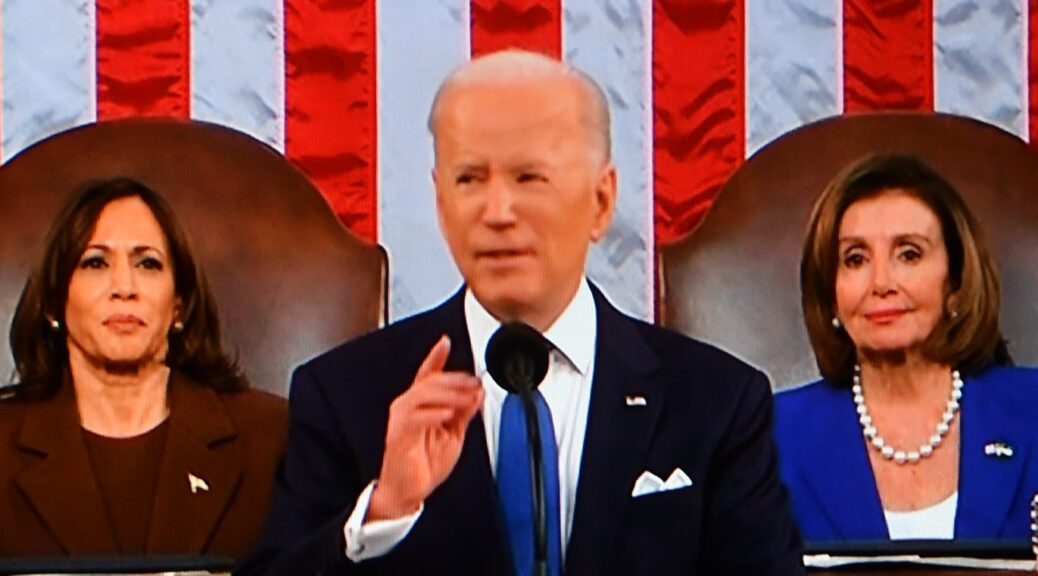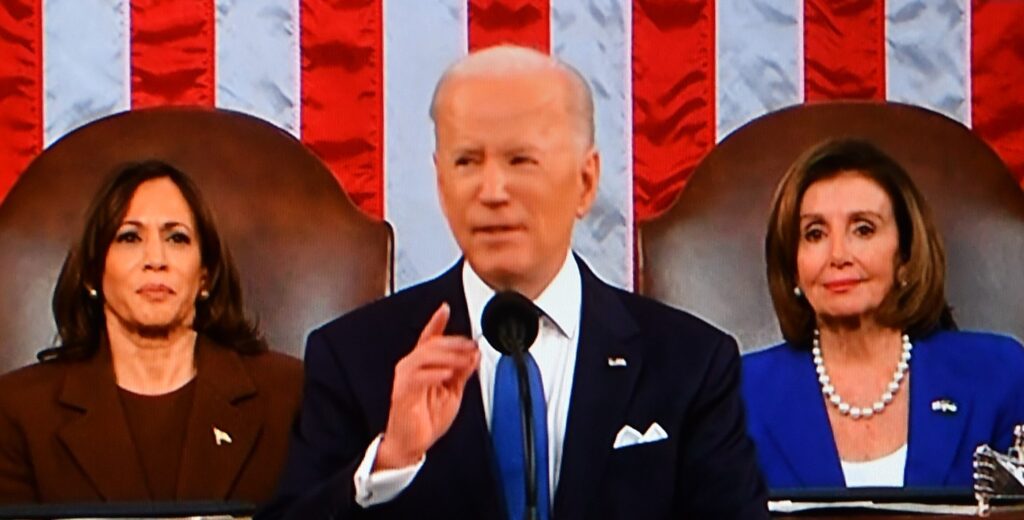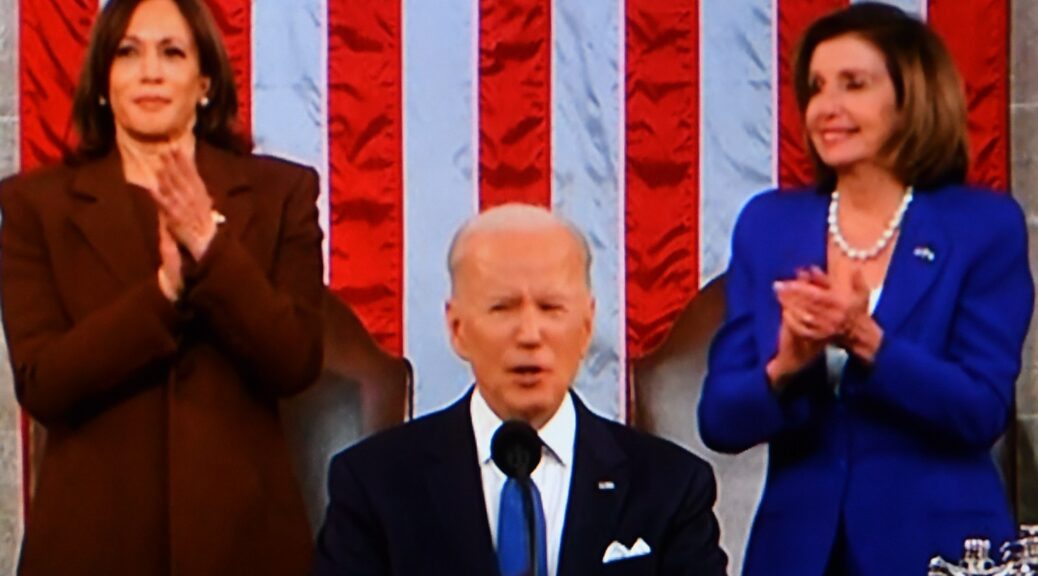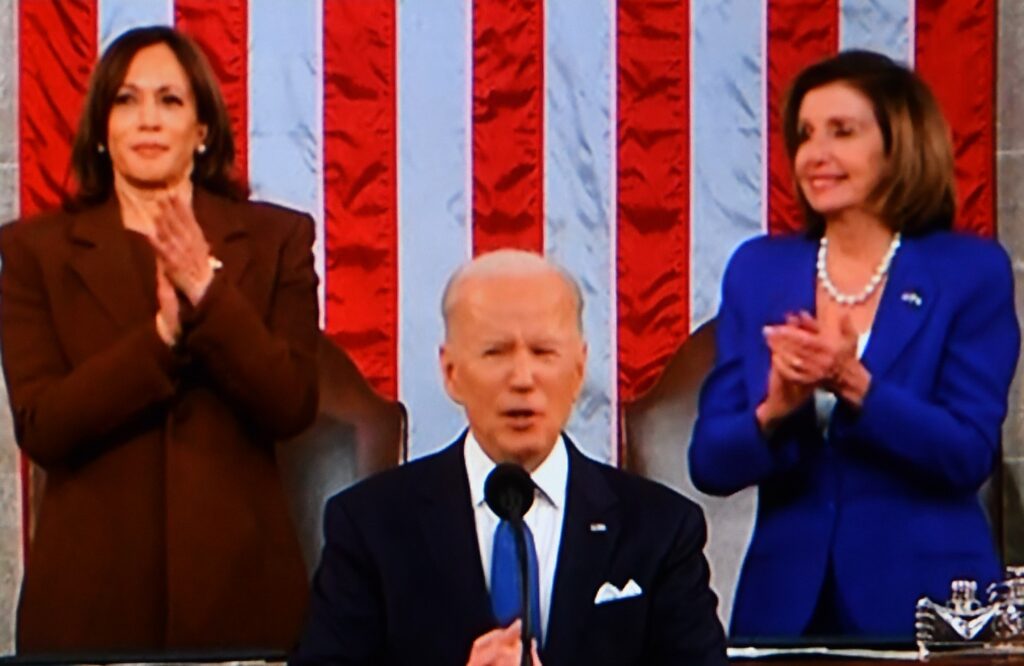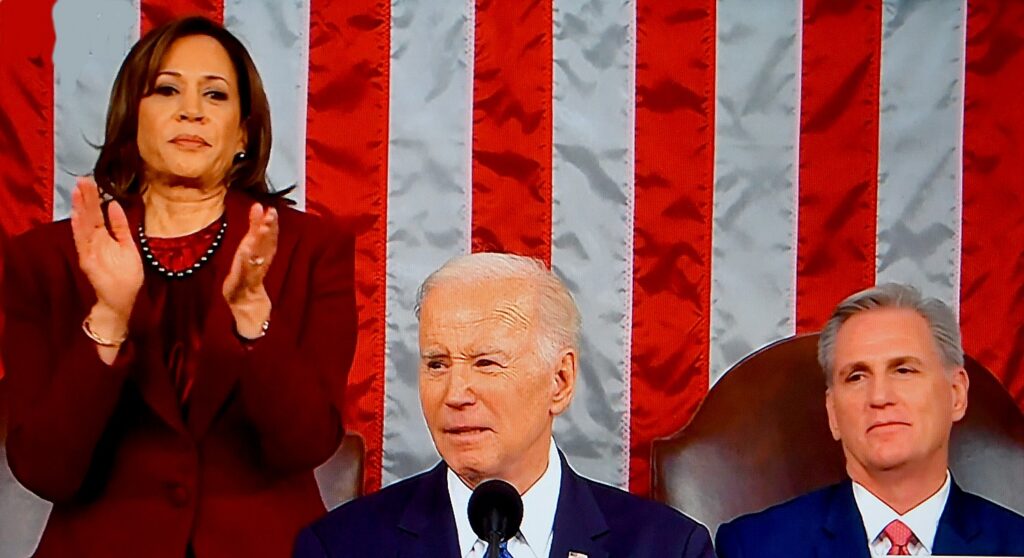
Further evidence that President Joe Biden’s economic plan – essentially building the economy from the bottom up and the middle out, and creating longterm, sustainable, stable growth – is working. Despite the manufactured hysteria over inflation and impending recession, the data shows otherwise – in terms of record 12 million jobs created, lowest unemployment in 50 years, real increase in wages.
Biden is also able to show progress in slowing inflation – which has been much more crippling throughout the world – and has been able to demonstrate that while his economic policies will address the national debt (a record reduction in the budget deficit), Republicans’ agenda would worsen the national debt (largely caused by the Trump/GOP tax plan that reduced taxes on the wealthiest individuals and corporations, and which added $7.4 trillion, or 25% of the national debt, in the four-year term). The Republican plan would actually add $3 trillion MORE to the national debt.
President Biden, commenting on the January CPI Report, said:
“Inflation in America is continuing to come down, which is good news for families and businesses across the country. Today’s data confirm that annual inflation has fallen for seven straight months. Inflation for food at the grocery store came down again last month. Gas prices are down about $1.60 from their peak last year. And real wages for working Americans are up over the last seven months, delivering welcome breathing room for American families. We are seeing this progress even as unemployment remains at its lowest level since 1969 and job growth remains resilient.”
“There is still more work to do as we make this transition to more steady, stable growth, and there could be setbacks along the way. That is why my unwavering focus is on continuing to lower costs for families, rebuild our supply chains, and invest in America. Right now, because of the Inflation Reduction Act we passed last year, we are lowering prescription drug costs, health care costs, and home energy costs for tens of millions of Americans all while lowering our deficits. My administration is eliminating junk fees which make it harder for American families to make ends meet at the end of the month. And we are creating manufacturing jobs all across the country, which will lower costs and rebuild our supply chains.”
“Unfortunately, many of my Republican friends in Congress seem intent on taking us in the opposite direction. They have proposed repealing the Inflation Reduction Act, which would make inflation worse, shower billions of dollars on Big Pharma, and increase the deficit. They are threatening to raise costs for seniors by threatening to cut Medicare and Social Security, and other critical programs that American seniors and families count on. And some are threatening to default on the full faith and credit of the U.S., which would raise costs and create economic chaos. I will stand firmly against any effort to make inflation worse and increase costs for families. Today’s data reinforces that we have made historic progress and are on the right track, and now we need to finish the job. “
The Congressional Republican Agenda to Increase the Debt by Over $3 Trillion
Congressional Republican leaders insist that the national debt is among our nation’s greatest challenges, and reducing it is among their highest priorities. In fact, they claim that reducing the debt is so urgent it warrants endangering the entire U.S. economy through debt limit brinksmanship. But their legislative agenda to date points in a very different direction—with proposals that would increase the debt by over $3 trillion.
- The first bill passed by the new Republican House majority increased the debt by $114 billion by allowing wealthy people and corporations to continue to cheat on their taxes.
- Congressional Republicans proposed repealing—and are even running ads attacking—reforms President Biden signed to lower prescription drug costs. Repealing these policies would increase the amount of money Medicare pays Big Pharma, raise costs for seniors, and add $159 billion to the debt.
- House Republicans have advocated and proposed repealing tax increases on large corporations that President Biden has signed into law, adding $296 billion to the debt.
- House Republican leaders have also committed to extend the expiring Trump tax cuts, a $2.7 trillion debt increase that would give the top 0.1% (with incomes over $4 million per year) a $175,000 annual tax cut, over 2.5 times a typical family’s annual income.
Grover Norquist, President of Americans for Tax Reform, exposed the political logic of Congressional Republicans’ fiscal hypocrisy. He told Republicans their focus should be “not the deficit” after all: it’s to shift public discussion to cutting spending, paving the way for more tax cuts for the wealthy.
That trickle-down economic theory has never worked. President Trump and President Bush’s tax cuts added trillions to the debt and failed to deliver their promised benefits for the economy or American workers. And taking revenues—and even savings from cutting corporate subsidies—off the table means Congressional Republicans consistently propose deep cuts to programs seniors and middle-class and working families count on.
That’s why the American people deserve to see Congressional Republicans’ full and detailed budget plan and compare it with the President’s Budget plan to invest in America, bring down costs for families, protect and strengthen Social Security and Medicare, and reduce the deficit, which he will release March 9.
Congressional Republicans’ Commitment to Debt Increases
The fiscal consequences of the debt increases Congressional Republicans have put at the top of their agenda are stark. After a decade, these policies, if enacted, would add over $3 trillion to the debt (accounting for debt service costs), increasing debt as a share of the economy by almost 10 percentage points.
Congressional Republicans’ debt increases include:
The Tax Cheats Protection Act: House Republicans’ first bill in the new Congress would add $114 billion to the Federal debt by repealing President Biden’s legislation that cracks down on wealthy tax cheats. While working people pay 99% of taxes on their income from wages and salaries, the top 1% hides about 20% of their income from tax, including by funneling it through offshore accounts and tax havens that do not report earnings. President Biden passed a law to make our tax system fairer by cracking down on wealthy tax cheats, while protecting middle-class taxpayers and small businesses and improving taxpayer service. But 221 House Republicans voted to enable tax fraud by wealthy Americans and large corporations.
Increase Spending With a Handout to Big Pharma: House Republicans have introduced a bill to repeal the entire Inflation Reduction Act (IRA), including the reforms President Biden signed into law to lower prescription drug costs. Congressional Republicans and Big Pharma have launched a concerted attack on the IRA’s prescription drug reforms, advocating to increase both Federal spending and seniors’ costs to increase Big Pharma’s profits. Thanks to the new prescription drug law, Medicare will finally be able to negotiate drug prices, and drug companies will pay rebates to Medicare if they try to hike their prices faster than the rate of inflation. Congressional Republicans want to repeal these policies, giving a $159 billion handout to Big Pharma, raising costs for seniors, and driving up the Federal debt.
Enrich Multi-Billion Dollar Corporations: In 2020, 55 of the largest, most profitable corporations paid $0 in taxes. The President signed into law legislation to level the playing field for companies and small businesses that are already paying their fair share in taxes. Under his corporate minimum tax, the largest, most profitable corporations—those with over $1 billion in profits—have to pay a 15% minimum tax on the profits they report to their shareholders. But House Republicans—through their Inflation Reduction Act repeal bill and other statements—have made clear that they want to enrich large corporations that don’t pay their fair share. That would add $222 billion to the debt.
Increase the Tax Subsidy for Stock Buybacks: President Biden signed into law a surcharge on corporate stock buybacks, which reduces the differential tax treatment between buybacks and dividends and encourages businesses to invest in their growth and productivity as opposed to paying out corporate executives or funneling tax-preferred profits to foreign shareholders. The President in his State of the Union address proposed quadrupling the stock buybacks tax to 4% to address the continued tax advantage for buybacks and encourage long-term investment over giveaways to executives. House Republicans instead want to repeal the stock buybacks tax and let corporations continue to funnel tax-preferred profits to shareholders instead of investing in productivity and the broader economy. That would add $74 billion to the Federal debt.
Extend President Trump’s Unpaid-for Tax Giveaway to the Wealthy and Large Corporations: President Trump and Congressional Republicans deliberately sunset portions of their tax giveaway to the wealthy and large corporations. They did this to conceal how much their plan added to the debt as well as how large the tax breaks were for multi-millionaires and large corporations. Now, House Republican Leadership has made clear that extending President Trump’s tax giveaway to the wealthy and large corporations is one of their top priorities. An analysis by the Tax Policy Center found that doing so would mean an average tax cut of $175,000 for the top 0.1%—Americans making more than $4 million per year. That average tax cut is more than 2.5 times a typical family’s annual income. Meanwhile, extending the expiring Trump tax cuts would add $2.7 trillion to the Federal debt over 10 years.
The President supports a fiscally responsible approach to continuing current tax policies for people making less than $400,000 per year, and opposes any tax increase for this group. Meanwhile, Congressional Republicans—including the more than three quarters of them who are signatories to Grover Norquist’s tax pledge—have made clear they will oppose paying for middle-class tax cuts by raising taxes on the wealthy and large corporations.
Even Without a Budget, Congressional Republicans Are Already Showing Who Will Pay the Price
The proposals Congressional Republicans have put forward show that, even as they commit to massive tax cuts for the wealthy and large corporations, they are more than ready to raise taxes on middle-class and working families. The House Republican IRA repeal bill would cut premium tax credits that are helping an estimated 14.5 million people pay for health insurance. And the House Budget Committee last week doubled down on eliminating Affordable Care Act premium tax credits for middle-income people with high health insurance premiums: a tax increase of $7,600 per year for a typical 62-year old earning $55,000.
In addition, some Congressional Republicans continue to push a national retail sales tax bill that would repeal most existing taxes and impose a new 30% sales tax on American families. The legislation would increase debt by trillions—and cut taxes for a couple making a million dollars a year by more than $200,000—and at the same time would raise taxes by at least $7,000 for a retired couple with $60,000 in Social Security income and at least $6,000 for a single mom making $38,000, a recent analysis found.
The bottom line is: having committed to over $3 trillion in debt increases and also insisted they are committed to reducing the debt, Congressional Republicans owe the American public a complete and transparent accounting of who will foot the bill. Will it be middle-class and working families, seniors, students, or all of the above?
House Republican agenda amounts to a death panel for Medicare and Social Security:
The contrast in agendas for America between President Joe Biden and the Democrats and the Congressional Republicans could not be more stark.
While President Biden, in his State of the Union address, described his plans for building on the historic job creation he has achieved, making more progress against inflation, reducing the deficit by making the wealthy and big corporations pay their fair share, and protecting Medicare and Social Security benefits from cuts, in contrast, House Republicans opened the week by announcing the latest in a long succession of attempts to undermine Medicare and Social Security.
Bloomberg reports that as part of a ransom demand for not triggering a financial meltdown, top House Republicans want an agreement that both earned benefits programs are put on track for cuts.
As The Washington Post reported in late January, House Republicans have continuously pressed for slashing Medicare and Social Security benefits in exchange for not actively harming the American economy with the first debt default in our history.
House Republicans have repeatedly indicated they would do so in the new Congress, and on the campaign trail.
Republicans have also introduced legislation to repeal the Inflation Reduction Act, which would be one of the biggest Medicare benefit cuts in history, depriving seniors of lower insulin costs, the $2,000 cap on out of pocket expenses for prescription drugs, and Medicare’s new ability to negotiate lower drug costs.
Today’s news is even more confirmation that House Republicans are taking direct aim at programs that are critical to the middle class, even as they vote for tax giveaways to the rich that would manage to increase taxes on working families while raising the deficit at the same time, the White House stated.
“With the President poised to announce new plans to keep making our economy works from the bottom up and the middle out – not the top down – House Republicans are dead-set on the opposite,” said White House spokesperson Andrew Bates. “They’re opening the week unveiling their latest in a long line of ultimatums about how they’ll act to kill jobs, businesses, and retirement accounts if they can’t cut Medicare and Social Security benefits. Meanwhile, they’re voting to worsen the deficit with tax welfare for the rich and big corporations. Think about that: they’re targeting the Medicare and Social Security benefits that middle class families pay in to earn their whole lives, then turning around and giving tax handouts to big corporations. The American people want more jobs and lower costs, not a death panel for Medicare and Social Security.”
“While President Biden shows the American people his plan to build on the unprecedented deficit reduction his leadership has already delivered, by having the richest taxpayers and big corporations pay their fair share and lowering prescription drug prices, House Republicans’ only plan is to make the deficit skyrocket by over $3 trillion with unaffordable tax giveaways to wealthy special interests,” stated White House spokesperson Andrew Bates. “They’ve even proposed raiding Medicare so that the ultra-rich can enjoy new tax welfare. Meanwhile, House Republicans are threatening to actively throw our economy into a tailspin with a default – which they have a non-negotiable, Constitutional duty to prevent – unless they can further cut Social Security, Medicare and Medicaid. It’s utterly backwards. The President is delivering on his commitment to build an economy that grows from the bottom up and the middle out – not from the top down. The House GOP seems determined to pull the American economy in the opposite direction, increasing taxes on working families while giving $3 trillion in new handouts for the rich.”
The chart below is based on the record:
| Policy | 10-Year Deficit Increase |
| Republican House-passed bill to make it easier for billionaires to cheat on their taxes | $114 billion |
| Republican Proposals to repeal Inflation Reduction Act’s prescription drug savings, which will raise costs for seniors and Medicare and increase federal spending | $159 billion |
| Republican Proposals to repeal the Inflation Reduction Act’s 15% minimum tax on corporations with profits over $1 billion | $222 billion |
| Republican Proposals to extend the Trump tax cuts: an average tax cut of $175,000 for the top 0.1% | $2.7 trillion |
| Deficit increases from Republican proposals to date | Over $3 trillion |
Congressional Republicans keep calling for earned benefits on the one hand, but more tax giveaways for the rich on the other
After President Biden put Republicans on the defensive over their long-public intentions to slash Medicare and Social Security benefits, a continuing list of congressional Republicans ranging from Ron Johnson last week to Senator Mike Rounds yesterday, keep proving his point.
Whether it’s a large number of House Republicans and Rick Scott pushing to repeal the Inflation Reduction Act in what would be one of the worst Medicare benefit cuts of all time, or the Republican Study Committee proposing benefit cuts and the privatization of Social Security of last year, the receipts are undeniable. For months, congressional Republicans have indicated they would even use the threat of a catastrophic default to cut Medicare and Social Security benefits.
Republicans in Congress justify these intentions under the guise of fiscal responsibility. However, at the same time, they are advocating for enormous tax giveaways to rich special interests that, combined, would add over $3 trillion to the debt. Those two positions are irreconcilable.
The first vote the Republican-controlled House took was to help wealthy individuals and multinational corporations worsen inflation by cheating on their taxes. They broadly support renewing the Trump tax giveaways for the rich. And in addition to being a Medicare benefit cut, repealing the Inflation Reduction Act would at the same time be more tax welfare for the rich and a giant windfall for Big Pharma. And that’s just the tip of the iceberg.
“It’s irreconcilable to support Medicare and Social Security benefit cuts in the name of supposed ‘fiscal responsibility,’ while at the same time adding $3 trillion to the national debt with a seemingly endless gravy train for rich special interests,” said White House spokesperson Andrew Bates. “Prioritizing tax giveaways for the wealthy and specific handouts for Big Pharma over the Medicare and Social Security benefits that middle class families pay to earn throughout their lives is a recipe for making our economy work from the top-down. The last thing that Americans who’ve felt invisible want is cuts to lifeline programs in exchange for permanent trickle-down economics.”

